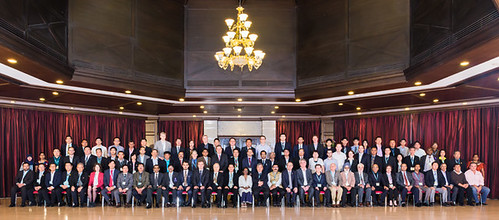A regional ‘Dairy Asia’ platform that aims to increase production and consumption of milk in Asia while supporting sustainability was formally launched on 27-30 January 2016 in Muak Lek, Saraburi in Thailand.

Dairy Asia aims to improve livelihoods, nutrition and environmental sustainability in the region (photo credit: Dairy Asia).
Led by the Food and Agriculture Organization of the United Nations Regional Office for Asia and the Pacific (FAORAP), Dairy Asia is an independent platform that is fostering collaboration among dairy sector stakeholders to sustainably improve the sector to make it a key driver of food security, environmental sustainability and equitable economic growth in the region. The initiative is using market-based approaches to provide milk to children to tackle under-nutrition as captured by its slogan ‘A daily glass of milk for every Asian child’, among other goals.
Steve Staal, an agricultural economist who leads the Policy, Trade and Value Chains (PTVC) program of the International Livestock Research Institute (ILRI), presented a paper on dairy economics and policy in Asia at the event. The paper was co-written with Vinod Ahuja from FAORAP, Torsten Hemme from IFCN Dairy Research Center, and Vijay Paul Sharma from Indian Institute of Management.
Staal talked about the consistent growth in milk production and consumption in Asia, making it the largest milk-producing region globally, with India producing 19% of the world’s milk. He said smallholder dairy farmers are responsible for producing most of this milk.

Steve Staal (centre), program leader of ILRI Policy, Trade and Value Chains, delivered a technical presentation on dairy economics and policy in Asia (photo credit: Dairy Asia).
‘But informal smallholders in South Asia continue to face several challenges to improving their milk production and productivity and profit at the farm and dairy value chain levels is low’, said Staal. Most milk producers are unorganized, which causes more risks and puts them in a weak bargaining position, and issues related to quality and safety persist, and funding for the sector is weak.
Another common concern in the region is varying milk production systems with generally low milk yields, which would render a one-size-fits-all solution ineffective. Staal also said there are emergent problems of greenhouse gas (GHG) emissions and market concentration due to the spread of supermarkets.
But these concerns, Staal believes, also offer many opportunities for dairy sector growth in Asia, including taking advantage of economies of scale, low labour costs, market demand for fresh milk and mitigating GHG emissions by increasing animal productivity.
Staal also called for reduction of trade barriers to encourage inter-regional dairy trade, more local attention on market information and supply efficiency, and greater policy and capacity support to smallholder dairy sector players.

The 2016 Dairy Asia launch in Thailand brought together scientists, policymakers and stakeholders to improve dairying in the region (photo credit: Dairy Asia).
The Dairy Asia launch was co-organized by FAORAP, the Animal Production and Health Commission for Asia and the Pacific (APHCA), the Global Agenda for Sustainable Livestock (GASL) and the National Dairy Development Board of India (NDDB).
The CGIAR Research Program on Livestock and Fish is also one of the initiative’s key partners.
Read about ILRI’s contribution to dairy sector in Asia through mainstreaming models and innovation platforms.
